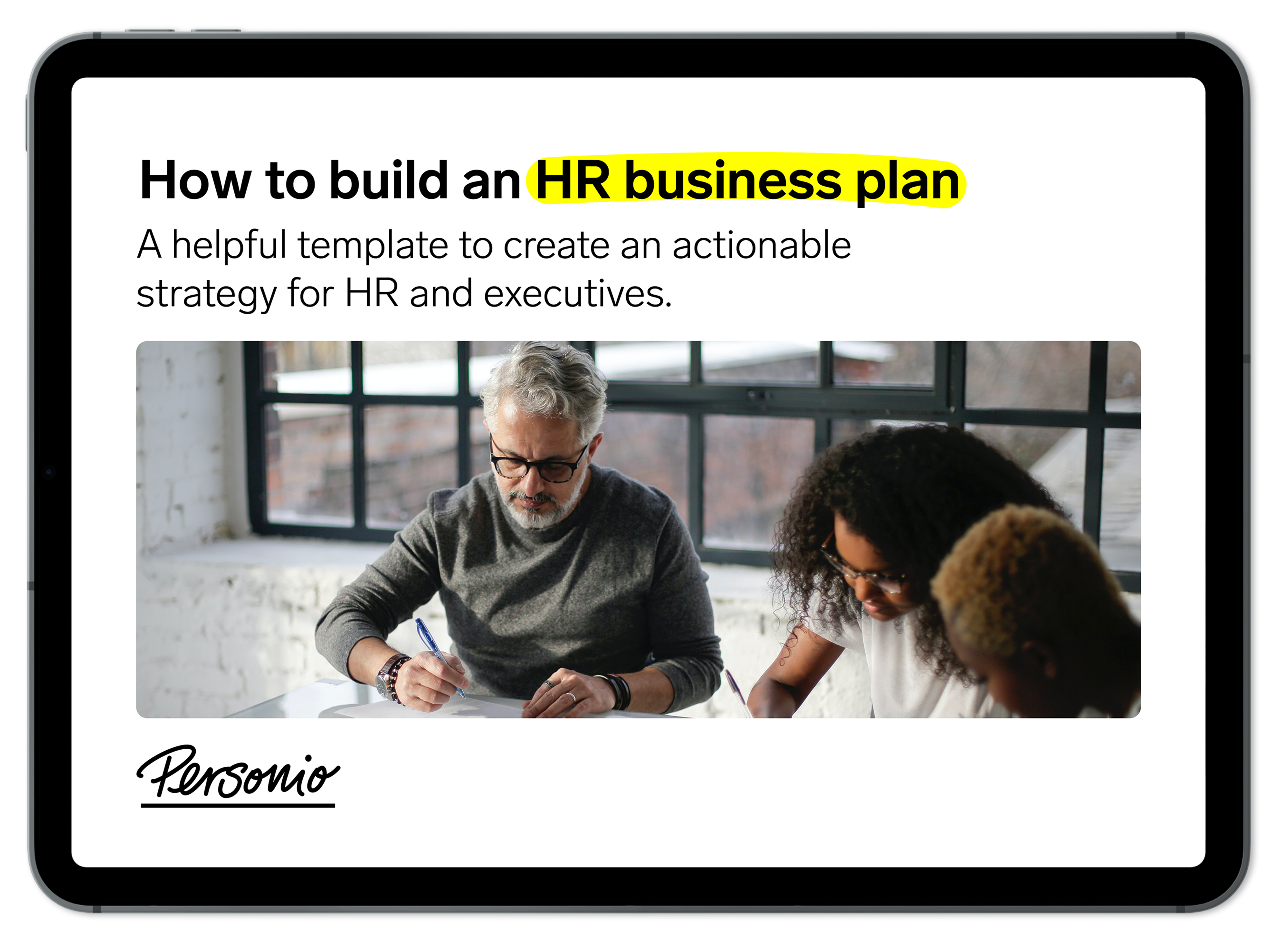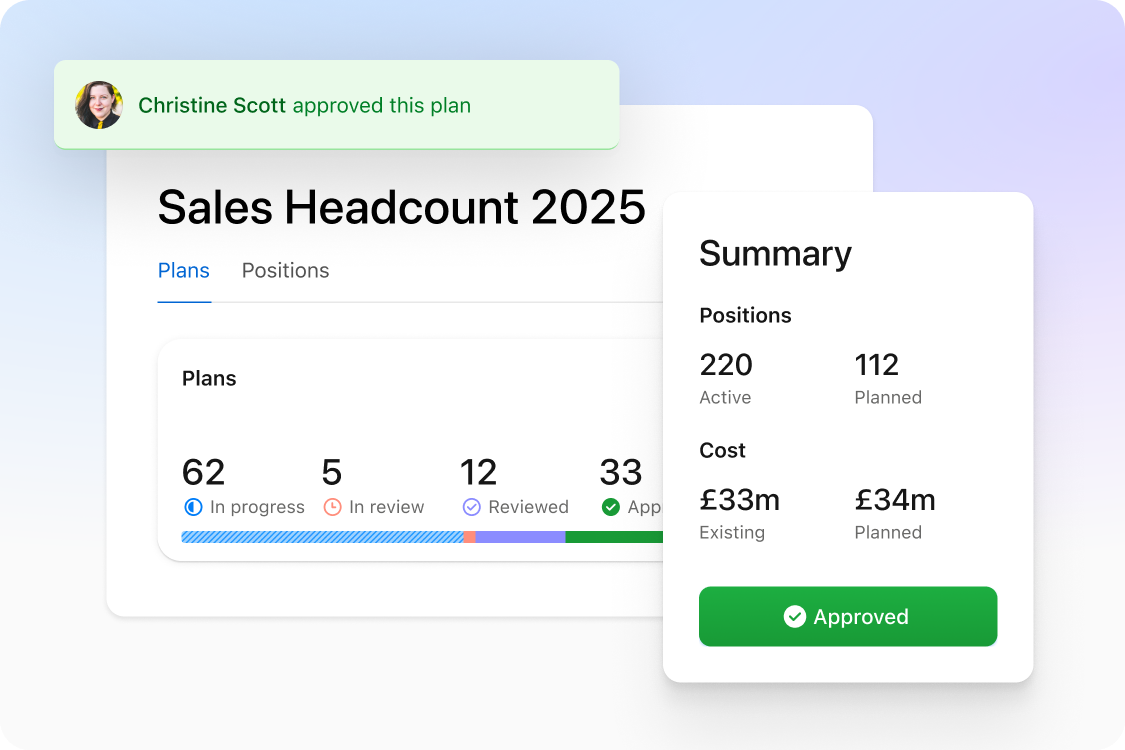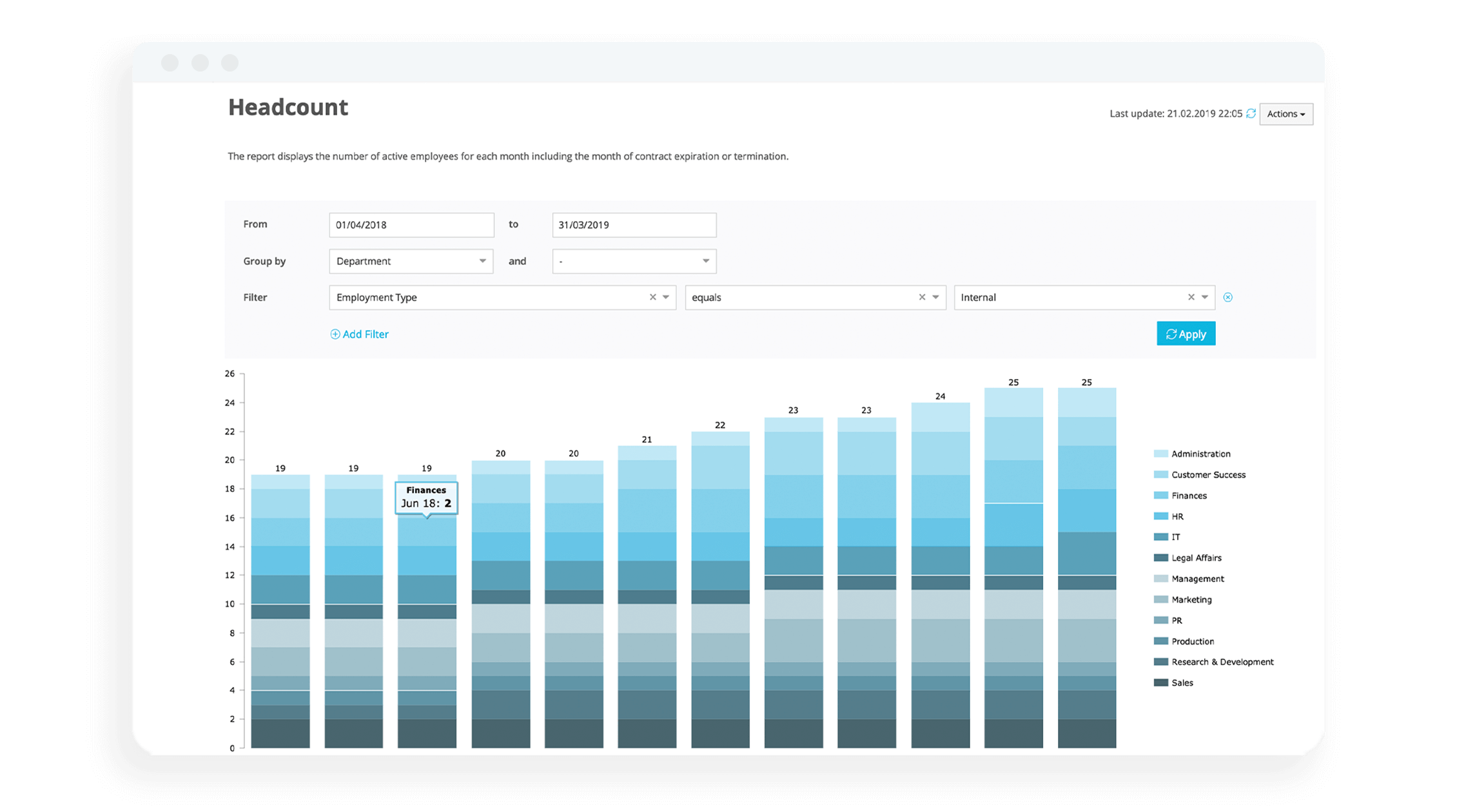
HR Business Plan Template
Unlock executive buy-in with our HR business plan template.
Get the templateThe role of succession planning in business continuity

Succession planning keeps your business running smoothly when key team members leave. Instead of rushing to fill the vacancy, you’ve already identified and prepared a suitable replacement.
But this strategy isn’t limited to filling senior roles. Say your company loses its only data engineer. Your succession plan ensures you’ve already got someone in mind to step in and take over without halting work – meaning you can handle transitions without impacting day-to-day operations or long-term goals.
Let’s look in more detail at how succession planning supports business continuity and some key strategies for success.
Contents
- 1The challenges of succession planning
- 2The health of your business depends on strategic succession planning: Here’s why
- 38 tips for maintaining business continuity with effective succession planning
- 4How Personio can help you ensure business continuity with specialised workforce and succession planning tools
The challenges of succession planning
Succession planning sounds simple; all you have to do is plan ahead to fill key roles effectively at your organisation. But there are a number of hurdles and variables that make succession planning challenging for HR teams to put into practice:
Limited candidates: Some 80% of organisations are experiencing a talent shortage, so you may struggle to hire externally or stop competitors from luring away promising candidates.
Organisational complexity: Candidates for internal promotions aren’t always obvious, especially in large companies or distributed workforces. Identifying and tracking them can be challenging without the right data.
Lack of clarity: It’s easy to overlook critical roles within your organisation. Sometimes you can’t see a key position’s impact until the employee has already left and their absence causes issues.
Unexpected timing: Employees may suddenly leave due to illness, injury or personal circumstances, making it hard to anticipate when you’ll need to fill roles.
Additional pressure: With around a third of the UK workforce approaching retirement age, HR teams are facing the reality of replacing a lot of critical positions.
Resistance to change: Some employees may worry about new senior managers making decisions that disrupt team dynamics or negatively impact their role, making the transition difficult for individuals filling key roles.
The health of your business depends on strategic succession planning: Here’s why
Despite these challenges, succession planning needs to be a pillar of your workforce management strategy if you want to guarantee the long-term success of your business.
The immediate benefits of succession planning are clear. Anthony Horton, CEO of Corporate Relocation, says, “When companies are able to identify and develop future leaders, they can quickly fill important roles when needed, keeping things running smoothly and minimising any downtime or uncertainty.”
However, the main advantage of a succession planning strategy lies in how it supports consistent performance over time:
“It helps preserve valuable institutional knowledge and protects strong client relationships, both of which are essential in an ever-changing environment,” underlines Anthony. “Without a solid plan, companies risk losing momentum and invite operational gaps.”
However, your strategy should go beyond operational efficiency. Effective succession management helps you stay true to your values and make decisions that always align with your mission:
“The importance of culture cannot be overlooked,” says Anthony, “Companies must build and maintain a culture that prioritises talent development and mentorship, even when daily operations get in the way.”
And though many recognise the importance of succession planning, only 17% of UK businesses are taking a strategic approach to it. This suggests they don’t have a structured process to overcome challenges like sudden vacancies or candidate shortages.
Fill critical roles swiftly and keep your business running smoothly

Personio gives you a clear overview of key positions to keep an eye on so you’re never caught off guard by a vacancy.
Learn more8 tips for maintaining business continuity with effective succession planning
Here are some tips to help you overcome challenges and adopt a more intentional and proactive succession planning process.
1. Stay ahead of the game
An effective succession planning strategy begins long before a vacancy arises. The average time-to-hire is over 47 days, so if you wait until key employees announce they’re leaving, their notice period probably won’t give you enough time to replace them.
Map out all the critical roles at your organisation and decide which ones would be the most disruptive to lose. Then, start making a contingency plan for these well in advance.
Share your map with other teams to gather their input. Only 23% of businesses collaborate with their C-level and upper management team on succession planning efforts, but you need everyone’s insights to make informed decisions.
2. Think outside the box when identifying key positions
When we talk about succession planning strategies, the conversation often turns to leadership development. But there are probably business critical positions elsewhere in your organisation.
For example, does your company have an accountant? They handle essential tasks, even though they aren’t in a leadership or management role. If your accountant left, you’d probably struggle to replace them, as there’s recently been a sharp decline in licensed accounting professionals.
Ask the following to help yourself look beyond the obvious senior leaders when identifying key roles:
Would a vacancy in this role delay projects or disrupt operations?
How quickly and easily could we find a replacement?
Does the position support multiple teams and functions?
Does the role require specialised skills or knowledge?
Is this person responsible for making key decisions?
3. Make succession planning an obligation for certain employees
Ask employees to play an active role in finding and preparing their replacements. Nobody knows their role better than they do, and each team member is most likely to know who’s right for their job and what they’ll need for a smooth start.
“[Don’t] underestimate the power of knowledge transfer,” emphasises Anthony. “Encourage current leaders to pass on all their valuable knowledge to future leaders to preserve continuity and ensure smooth transitions.”
Some team members may be uncomfortable with this request and take it as a sign you’re actively trying to replace them. Normalise the task by making it standard practice across your organisation and requesting it from an early stage.
4. Maintain open communication about talent management
Effective talent management can help you identify potential successors. This helps you see which employees are keen to change roles and help them start laying the groundwork.
Arrange regular check-ins with team members to discuss their career goals and aspirations. These meetings can be a safe space to explore their options and see how they fit into your company’s objectives. After they’ve settled on objectives, you can help them build career paths to get there.
It’s worth noting that not everyone is interested in moving towards a leadership role. See who’s willing to make lateral moves to fill key positions or build out departments. For example, developers might want to move from front-end to back-end development to expand their skill set rather than becoming team leads.
5. Invest in professional development
Just because someone’s eager to make a career move doesn’t mean they’re ready. Employees often need upskilling training to prepare for new roles. This can consist of:
Online courses
Formal training
On-the-job learning
Cross-functional projects
Coaching and mentoring
Upskilling doesn’t just help employees step into their predecessor’s shoes. As your business needs evolve, roles may as well. You need to help your employees develop the skills necessary to handle unique challenges like disruptive technology or industry shifts.
The good news is employees are up for these challenges. The overwhelming majority say they want to develop new skills to progress in their current or future roles.
6. Practise proactive candidate sourcing
Continuously look for talent both inside and outside your organisation. You can’t always find internal candidates to fill roles, especially if you’re a small and fast-growing company that simply doesn’t have enough employees to go around.
Proactive candidate sourcing allows you to build a talent pool. Scout for potential replacements and assess them, even when you don’t expect employees to leave. If a critical role does suddenly become vacant, you’ll have many potential candidates lined up.
Use applicant tracking software to automate steps in the process. When you don’t have to worry about filtering applications or screening, you can invest more time into building relationships with candidates. These connections mean your ideal hire will be more likely to respond if you offer them a job.
When casting your net, Ysiad Ferreiras, CEO of Fullmind, underlines the importance of seeking out candidates with diverse backgrounds and experiences. He states, “Encouraging diversity in your leadership pipeline brings in more varied perspectives.” And in his experience, “embracing diverse talents led to more innovative solutions in our campaigns.”
7. Document all your key processes
Career moves can be overwhelming. Even if someone has all the core skills necessary for the job, they still have to get used to the position and absorb a lot of new information.
But their predecessor may not be available for support once the candidate officially steps into the role. They might be busy at their new job or enjoying retirement.
That’s why you should request employees document their key processes – especially ones that hold unique organisational knowledge. Ask them to write down key steps or take screen captures to explain their processes. Loom lets you record your desktop or any browser apps, and Slite makes it easy to build out SOPs.
Employees can then refer to these documents and videos at their own pace or as situations arise in their new role. They’re more likely to feel confident and in control when they don’t have to keep turning to colleagues for help.
8. Provide support to employees who change roles
Continue to support employees after they’ve moved into a new role, as they’re likely to experience some setbacks and question their ability to perform the job.
Arrange check-ins to offer support and guidance and help resolve any issues. They may just need a reminder that while they might not handle challenges like employee disputes as easily as an experienced manager yet, they’ll get there eventually.
Staff also need support to keep developing in their roles and advancing in their careers. Gartner research shows that employers frequently underestimate how quickly their teams want to grow, and many employees aren’t content to just stop at one promotion.
By keeping the conversation going, you can demonstrate your organisation’s dedication to its team's long-term development.
How Personio can help you ensure business continuity with specialised workforce and succession planning tools

Personio’s workforce planning software is designed to keep your business on track, even during unexpected changes.
You can plot all your roles and current vacancies on our organisational chart to see how your team fits together so it’s easier to spot who’s best suited to step into a position. When positions unexpectedly open, Personio helps you adapt effectively to these changes by giving you a clear overview of all your workforce data.
Our workforce planning software is also fully integrated with our performance and development tools so you can ensure everyone’s ready for their new responsibilities when the time is right. You can set goals tied to your succession plan and track progress toward them.
With all these tools to help you adapt and plan ahead, Personio guarantees you’ve always got the right people in the right places to drive success.
Keep your business on track – even in the face of unexpected changes

Personio gives you access to valuable real-time people data so you can stay ahead of the succession planning curve.
Learn more